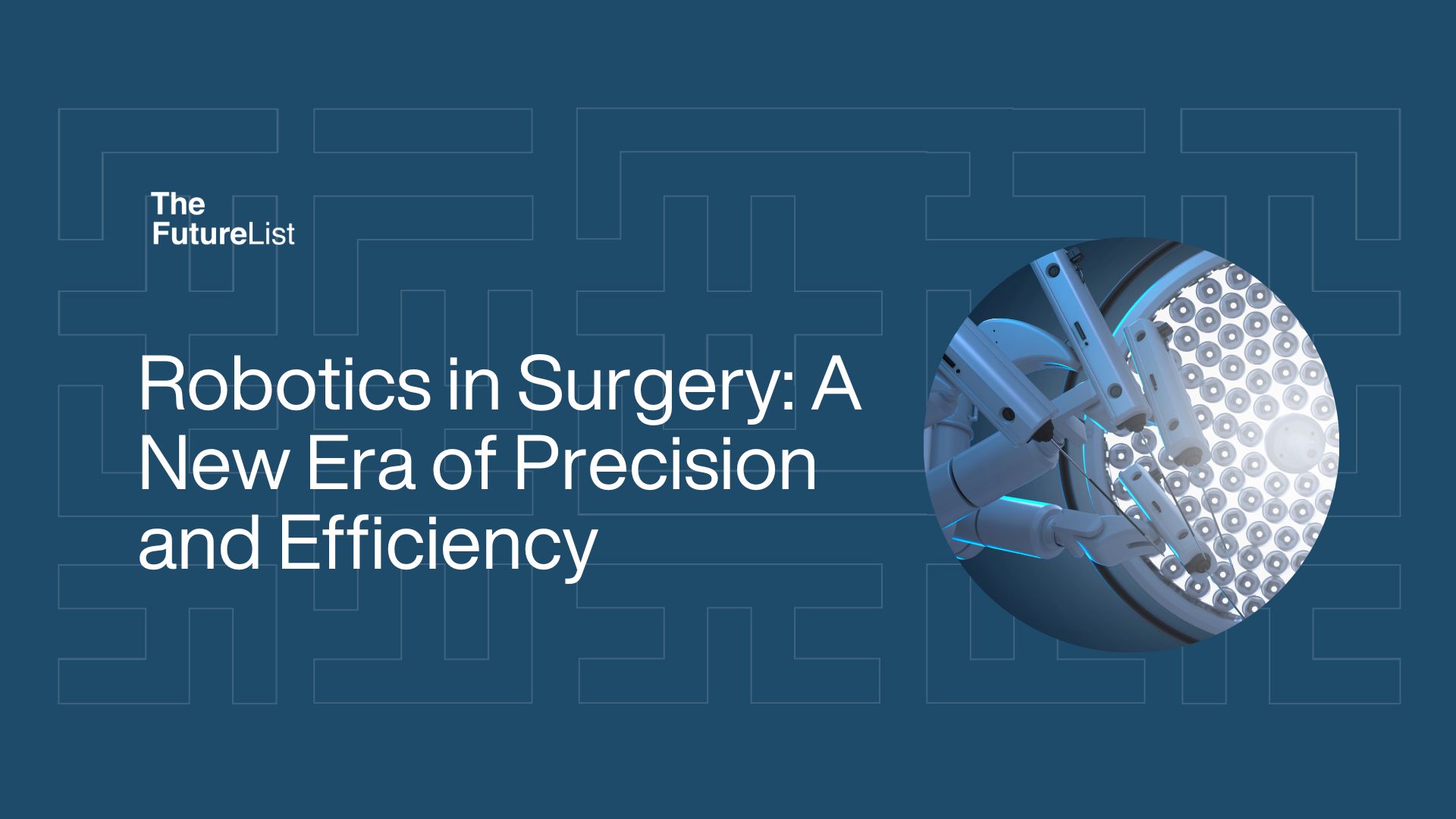
Robotics in Surgery: A New Era of Precision and Efficiency
By Henry Duah
In recent years, the field of surgery has experienced a profound transformation with the integration of robotics. This technological revolution, driven by advancements in engineering and medicine, has ushered in an era of “minimally invasive, maximally effective” procedures. From delicate ophthalmological manoeuvres to complex general surgeries, robotic-assisted interventions offer numerous benefits, including enhanced precision, reduced invasiveness, and faster patient recovery times. However, alongside these advancements come challenges that require careful consideration, such as seamless integration with existing infrastructure, regulatory navigation, and workforce impacts also exist. In this article, we explore how multinational corporate organisations are contributing to improving healthcare through innovative robotics in surgery.
Intuitive Surgical’s da Vinci (HQ: Carlifornia, USA; Founded 1995)
Intuitive Surgical’s da Vinci surgical system stands as a pinnacle of innovation in the field of robotic-assisted surgery. With a legacy spanning nearly three decades, da Vinci systems have redefined surgical precision, vision, and control. They offer a suite of advanced features, including multiport capabilities in the da Vinci Xi system, single-port surgery with the da Vinci SP system, and foundational, entry-level functionality in the da Vinci X system. What sets da Vinci apart is its quantified performance, demonstrated through over 12 million procedures and peer-reviewed in over 34,000 articles. This system operates within a unified ecosystem that integrates learning and services, ensuring excellence in practice and program management.
Medtronic’s Robotic-Assisted Surgery (Hugo) (HQ: Minneapolis, USA; Founded 1949)
The Medtronic Hugo™ Robotic-Assisted Surgery (RAS) System represents a pioneering advancement in surgical technology, offering unparalleled innovation and versatility. As the first soft tissue surgical company to provide open, laparoscopic, robotic, and digital solutions, the Hugo™ system prioritises choice and flexibility for surgeons. A modular and portable design enables greater adaptability across surgical approaches and more efficient utilisation in operating rooms. Medtronic offers proven partnership, comprehensive support, and tailored training to ensure surgeons’ success with the Hugo™ system. The Hugo™ RAS System embodies a commitment to advancing minimally invasive surgery, empowering surgeons to make a significant difference in patient care with cutting-edge technology and unwavering support.
CMR Surgical’s Versius (HQ: Cambridge, UK; Founded 2014)
Versius, a revolutionary surgical robotic system developed by CMR Surgical, represents a paradigm shift in the field of minimal access surgery. Versius aims to simplify the adoption of surgical robotics into existing clinical practices. By offering easy access to actionable insights through its digital ecosystem, Versius empowers surgeons with comprehensive data and tools to make informed decisions and enhance patient care. Additionally, Versius addresses ergonomic concerns commonly associated with laparoscopic surgery, offering instinctive instrument and vision controls, along with an open console design that allows surgeons to operate comfortably for longer durations, potentially extending their careers. Versius represents a transformative innovation in surgery, promising to revolutionise the way minimal access procedures are performed while prioritising patient safety, surgeon comfort, and surgical proficiency.
Johnson & Johnson MedTech’ OTTAVA (HQ: New Jersey, USA; Founded 1886)
The OTTAVA robotic surgical system, developed by Johnson & Johnson MedTech, represents a groundbreaking advancement in the field of surgery. Anticipating FDA submission in 2024 to initiate clinical trials, OTTAVA is designed to transform the surgical experience with its innovative architecture and clinically relevant features. Unlike traditional robotic systems, OTTAVA incorporates four robotic arms into a standard-size surgical table, allowing for seamless integration into any operating room (OR). With OTTAVA, Johnson & Johnson MedTech aims to redefine the future of surgery by prioritising the human connection between patients, surgeons, and OR staff while delivering exceptional surgical outcomes.
The integration of robotics in surgery has ushered in a new era of precision and efficiency, offering numerous benefits to patients and surgeons alike. Systems like Intuitive Surgical’s da Vinci, Medtronic’s Hugo, CMR Surgical’s Versius, and Johnson & Johnson MedTech’s OTTAVA represent cutting-edge advancements in the field, promising enhanced surgical outcomes and patient care. Looking ahead, the future of robotic surgery in healthcare holds immense promise, with ongoing technological advancements, expanded applications, and the integration of artificial intelligence poised to revolutionise the surgical landscape. However, addressing challenges such as regulatory hurdles, cost considerations, and workforce implications will be crucial in realising the full potential of robotic-assisted surgery and ensuring its widespread adoption for the benefit of patients worldwide.
Get innovation insights from The FutureList weekly. Subscribe to our newsletter here
Categories
- Agritech
- Artificial Intelligence
- Biotech
- Blockchain
- Climate Tech
- Data Infrastructure
- Edtech
- Events
- Fashion
- Fintech
- Healthtech
- Infrastructure
- Innovation Memos
- Innovation Scout Program
- Insight
- Insurtech
- Machine Learning
- Martech
- Mobility
- Music and Media
- Partner Offers
- Perks
- Procurement
- Proptech
- Retailtech
- Ridehailing
- Ridesharing
- Robotics
- Space Aviation
- Supply Chain
- Talent
- Telecoms
- Uncategorized
- Venture Capital
- Wastetech
- Women In Tech
Recent Posts
- How AI Surveillance is Shaping Public Safety in Smart Cities
- Innovation Memo with Zencey: Bringing Equitable Healthcare to Africa
- Inside the Software Model Running Modern Harbours
- The Formula for Future Speed: Data-Driven Performance in Racing
- Leveraging Next-Gen Endoscopic Interventions and Innovations for Healthcare